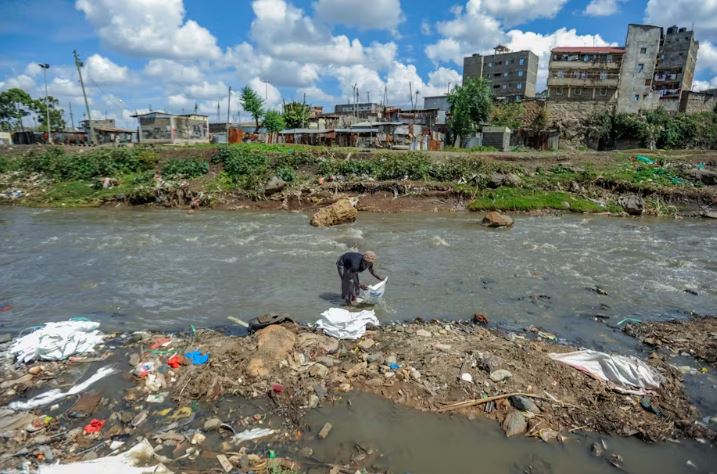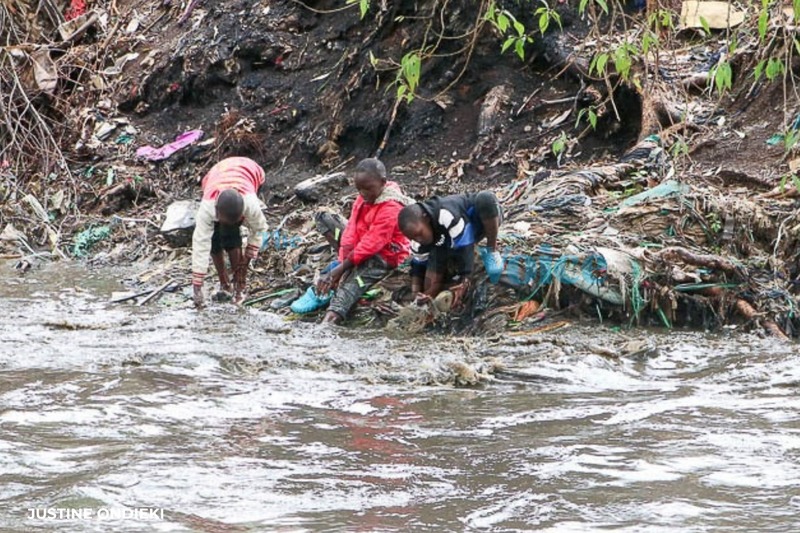‘Forever chemicals’ polluting African waters: Lake Victoria, Nairobi River among hotspots

The “forever chemicals” don’t break down easily in the environment. They accumulate in organisms over time, moving up the food chain.
Every week, there seems to be a new report about where “forever chemicals” have been found: in soil, drinking water, our bodies, and marine animals.
Their proper scientific name is perfluoroalkyl and polyfluoroalkyl substances (PFAS). But they’re more commonly called “forever chemicals” because they almost never break down once they’re in an environment. These chemicals are harmful in many ways: they kill fish, disrupt plant growth and can make humans very ill.
More To Read
- Officials warn of child safety risks near Ngong River in Mukuru
- Lake Victoria fish farmers seek government aid to counter cross-border harassment
- Contaminated water from River Kibos blamed for fish deaths at Dunga Beach
- Isolated heavy showers expected in Rift Valley, Lake Victoria basin - Kenya Met
- Concerns mount over mass displacement as Ruto’s Nairobi Rivers revamp gains pace
- Renewed hope for Nairobi River as thousands of youth drive clean-up exercise
In a new study, water and chemical researchers Patrick Ssebugere, Ashirafu Miiro, and Oghenekaro Nelson Odume examined existing research from various African countries to identify the continent’s permanent chemical hotspots. They then told The Conversation Africa what they’d learned.
How prevalent is the problem of ‘forever chemicals’ in Africa, according to your research?
It’s clear from our findings that forever chemical contamination, while under-reported compared to industrialised countries, is a widespread, pressing environmental issue on the continent.
Our study identifies PFAS contamination in 11 African countries: South Africa, Kenya, Nigeria, Uganda, Ghana, Ethiopia, Mozambique, Tanzania, Zambia, Mali and Tunisia. South Africa recorded some of the highest levels. These countries are based on the scientific papers examined. It is highly likely that these chemicals are in other countries but remain unreported.
The European Union has a list of proposed PFAS thresholds for sensitive environments like rivers, lakes and wetlands. Some regions within the countries in our study exceed those thresholds.
What are the hotspots?
Industrial effluent outfalls and commercial agriculture are two of the main drivers of PFAS contamination. Wastewater treatment plants are another major culprit. Many plants across the countries in our study use outdated technology and are not sufficiently regulated. This allows PFAS-laden effluent to flow into aquatic ecosystems.
 Children at the banks of the Nairobi River on November 11 2024. (Photo: Justine Ondieki)
Children at the banks of the Nairobi River on November 11 2024. (Photo: Justine Ondieki)
One of the hotspots we identified was South Africa’s Vaal River, where industrial effluents were contributing to contamination. Another was Kenya’s Nairobi River; urbanisation and industrial runoff are driving high PFAS levels in this important body of water.
Perhaps the most worrying example is Lake Victoria. It is Africa’s largest lake and feeds the Nile River, which spans 11 countries and supports more than 300 million people.
Why is this a problem?
PFAS are called “forever chemicals” because they don’t break down easily in the environment. They accumulate in organisms over time, moving up the food chain. For humans, this means exposure through fish or water sources, increasing risks of kidney disease, reproductive disorders, miscarriages and developmental issues in children.
Ecosystems are also impacted by these chemicals, which affect aquatic biodiversity and food webs.
What can be done about it?
There are several ways to address PFAS contamination.
Strengthening regulations: African countries should align with international frameworks like the Stockholm Convention, a global treaty to eliminate persistent organic pollutants. All 11 of the countries in our study are signatories to the convention. But, given the problems we identified, it’s clear that enforcement is weak. Stricter regulations are also crucial if producers are to be held accountable for using PFAS and pushed to use safer alternatives.
Improving wastewater treatment: There are a number of advanced technologies, such as adsorption and advanced oxidation, that have been proven to effectively remove PFAS from effluents. Wastewater treatment plants in our study countries must be urgently upgraded and begin using such technologies.
Raising public awareness: Governments and NGOs should educate consumers about the dangers of long-term exposure via products that contain PFAS, like non-stick cookware. People must also be taught about safer alternatives.
Enhancing research and funding: More studies are needed to track PFAS trends on the continent and to evaluate their impacts. Research is key to developing affordable PFAS removal technologies that are tailored to African contexts.
By Patrick Ssebugere Senior lecturer, Department of Chemistry, Makerere University, Ashirafu Miiro PhD candidate, Rhodes University and Nelson Odume Associate professor, Rhodes University
Top Stories Today












































